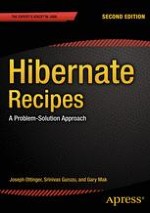2015 | OriginalPaper | Buchkapitel
14. Web Applications
verfasst von : Joseph Ottinger, Srinivas Guruzu, Gary Mak
Erschienen in: Hibernate Recipes
Verlag: Apress
Aktivieren Sie unsere intelligente Suche, um passende Fachinhalte oder Patente zu finden.
Wählen Sie Textabschnitte aus um mit Künstlicher Intelligenz passenden Patente zu finden. powered by
Markieren Sie Textabschnitte, um KI-gestützt weitere passende Inhalte zu finden. powered by
